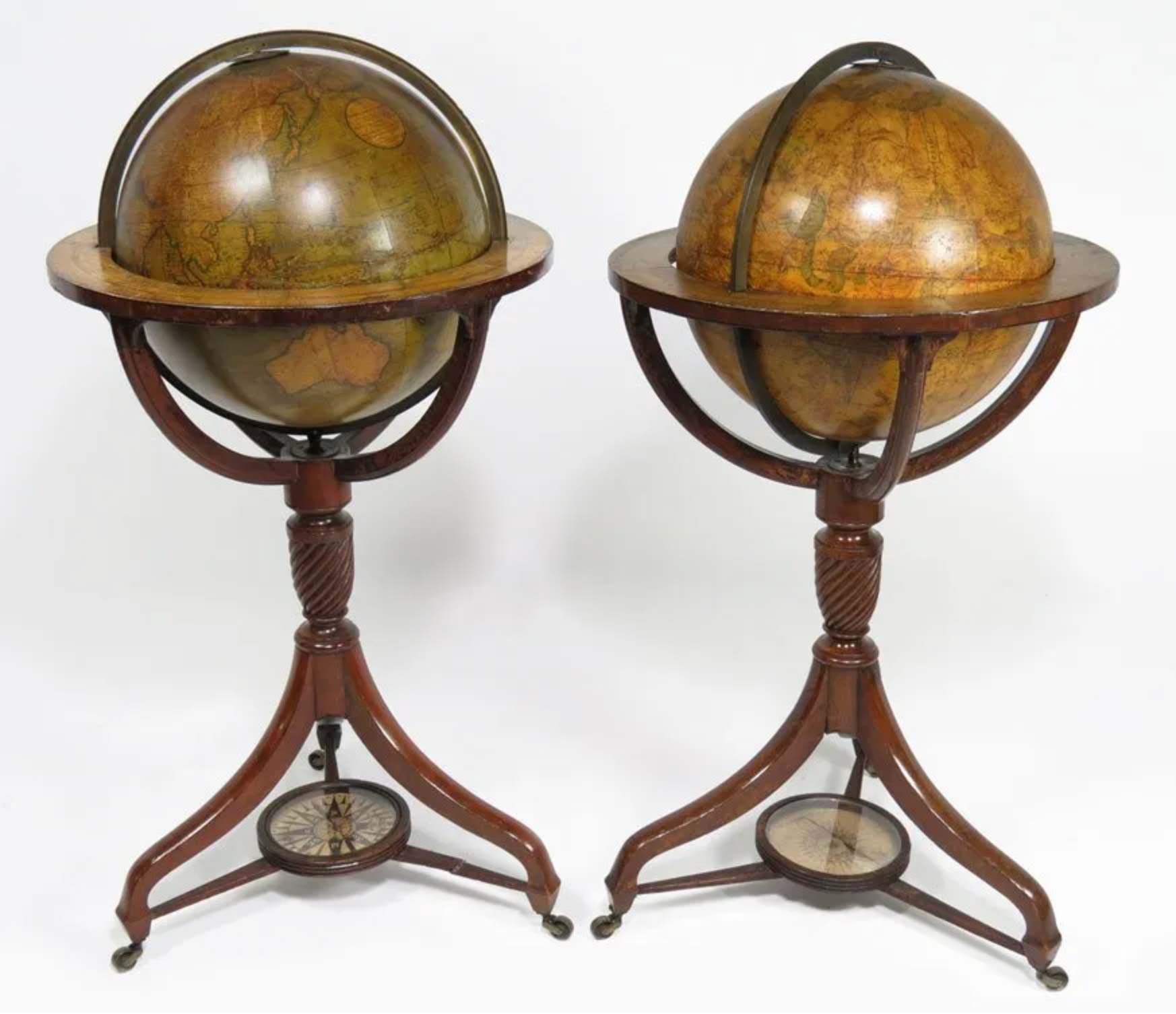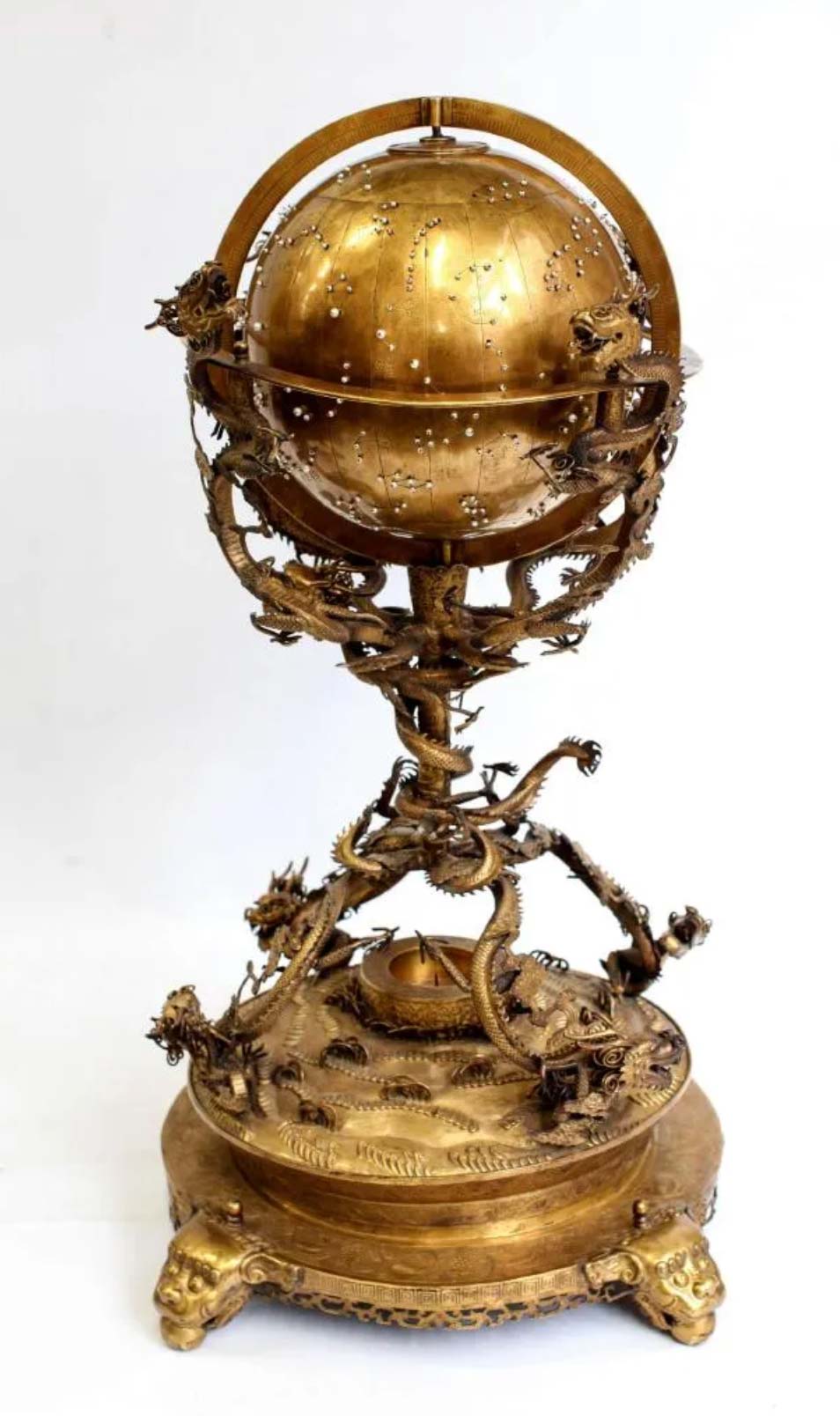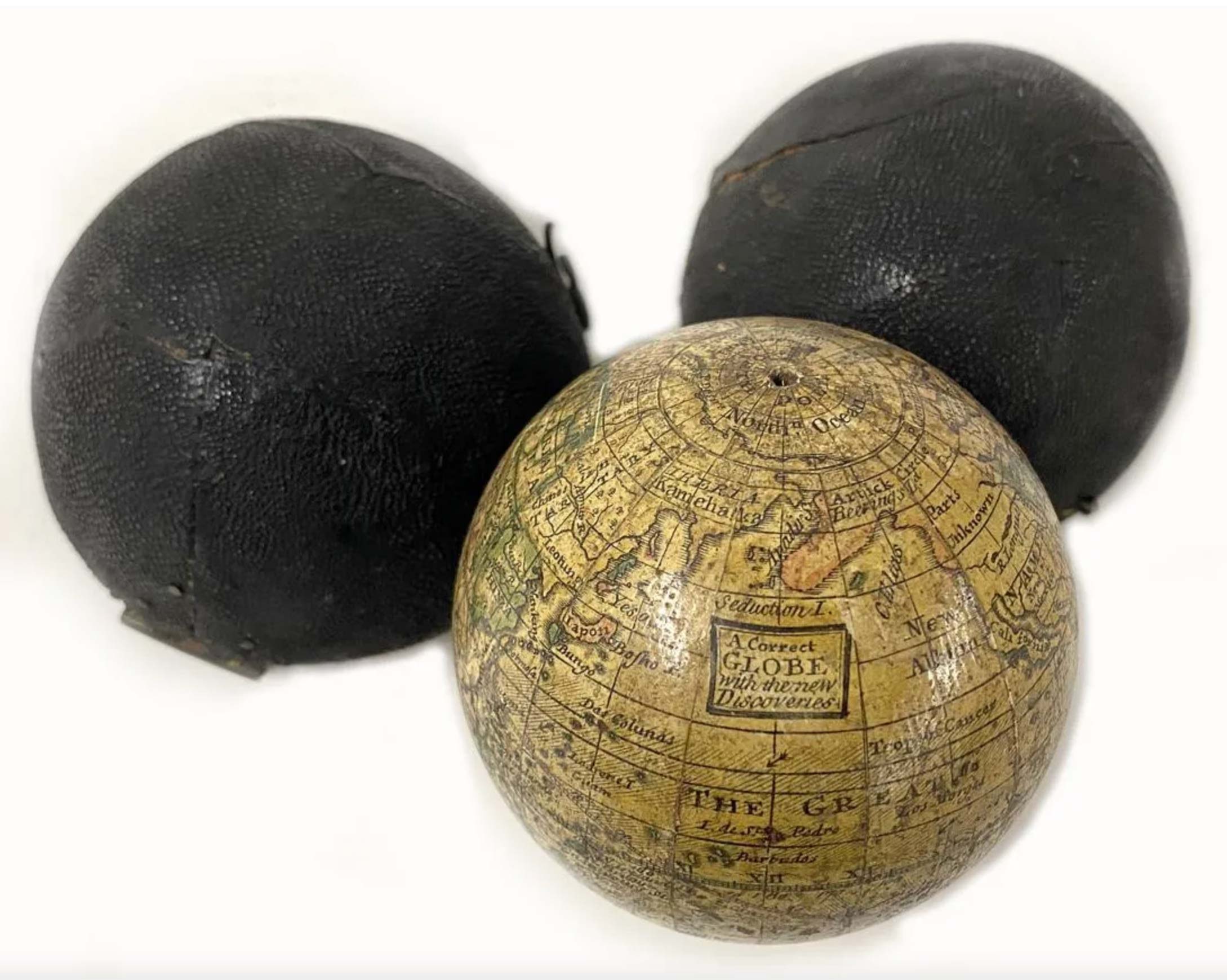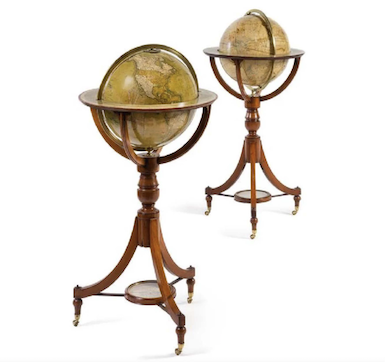
At its most basic, a globe is a carefully designed and printed map that’s been glued to a ball and installed in a decorative display stand. Creating the map is the hardest part, because it’s a two-dimensional object that must approximate a three-dimensional world. Classic globe designers would fill the waters with eye-catching sea creatures and the land with fantastic beasts and exotically dressed natives. But there’s no artistic license when it comes to continents and countries — they must appear where they actually are.
Classic globes look gorgeous, and a grand old library isn’t complete without at least one antique globe in a fine wooden stand.
First and foremost, globes are scientific instruments. They convey the planet’s geography as understood during their time of manufacture. A reasonably accurate globe predating the rise of satellite imagery and computer technology is wonder to behold. That’s one big reason why antique globes in good condition are highly coveted.
Globes are surprisingly old. Greek historical documents describe a terrestrial globe showing land masses and the oceans of the Earth, its creation credited to the scholar Crates of Mallus in the 2nd century A.D. Sadly, it did not survive.
The most ancient artifact that counts as a globe is from the same era and is part of a larger artwork. Known as the Farnese Atlas, the Roman sculpture depicts the god Atlas hoisting a celestial globe showing the constellations of the night sky.
The earliest terrestrial globe still in existence is known as the Erdapfel, or “earth apple.” It was fashioned by German artisan Martin Behaim between 1490 and 1492. Dating is relatively accurate as the New World is absent from its cartography.
While the market for globes has fluctuated, it seems to do better than other types of antiques. In general, globes that predate the 19th century are more desirable. And in many cases, bigger is better.
Condition outweighs every other factor; restorations, replacement bases and other “fixes” hurt value. If the compass installed in the base of the stand isn’t original, that hurts, too. And if a globe started life as one of a pair that has since parted ways, values can suffer.
CRN Auctions of Cambridge, Massachusetts, sold a set of early 19th-century English Regency floor globes in 2012 for $37,000, well ahead of estimates. Auctioneer Carl Nordblom recalls them as being “pretty nice globes” in “fairly respectable” condition, mounted in mahogany tripods that still had the original compasses in their bases. He believes the pair overperformed because “the market was so hot back then.”

Hindman in 2018 sold a set of 12in-diameter English library globes dating to 1838. The set commanded the healthy sum of $22,000 against an estimate of $8,000-$12,000.
The set soared for a reason that was not mentioned in the lot notes but was reflected in the title of the auction: It had belonged to the late adventurer Steve Fossett, who displayed them in the library of his Chicago apartment. “That added to the sex appeal,” says Corbin Horn, a director and senior specialist at Hindman. “While his death was tragic, it’s cool to say, ‘Here’s a great pair of globes owned by a modern-day explorer.’”
Though they reflect geographic or astronomic facts, globes can also reveal how a nation views the world, and what its citizens consider important. In 2018, the team at Anders Auction in Brooklyn were surprised to see a Chinese Qing Dynasty gilt bronze globe sell for $120,000 against an estimate of $6,000-$8,000. The alluring object, which stood 33in in height and was festooned with dragons, did not bear an imperial stamp, but high quality hinted at its likely origins. “The craftsmanship has to be of the Imperial Court,” says Will Jiang, manager at Anders Auction. “Normal people would not have it.”
The surface of the globe is covered with dots instead of continents, which indicates that it’s a celestial globe. Jiang speculates that “up to that time, people [in China] still knew more about the sky than the world itself, and they still believed China was the center of the earth. The idea of a terrestrial globe, to them, was not that big. That’s what I believe — a celestial globe would have been more relevant.”

Another delight that globes provide — and maps can’t match — is the sensation of gazing down on the whole earth. It’s a major reason why globes make excellent diplomatic gifts; one ruler invites another to contemplate the world in full while subtly reminding each exactly which part of it they currently control.
If it feels god-like to gaze upon the earth, imagine that feeling amplified when you carry it around in your pocket. In 2020, CRN Auctions sold an 18th-century terrestrial pocket globe for $5,500 against an estimate of $3,000-$4,000. Three inches in diameter and accompanied by its original shagreen case, the pocket globe also featured an interior celestial map.
“I think this one in particular had good color and I don’t feel anyone had fooled with it,” Nordblom says, explaining that the tiny globe had a few nicks but appeared to have avoided the need for restoration. Its case had been less fortunate, having suffered a crack and lost its ability to close completely. “It’s easy to damage them by dropping them on the floor,” he says.

Technology has rendered globes obsolete, but the secondary market should continue to roll. Documents that accurately described the world were once considered state secrets because they revealed the locations of unconquered lands and untold riches. Today, the shapes that stretch across the surface of the earth are as familiar as the face of a friend. And as long as that remains true, globes will have a place in our hearts and our homes.
[av_button label=’Search for world globes at LiveAuctioneers’ icon_select=’no’ icon=’ue800′ font=’entypo-fontello’ link=’manually,https://www.liveauctioneers.com/search/?keyword=world%20globe&sort=-relevance&status=online’ link_target=’_blank’ size=’small’ position=’center’ label_display=” title_attr=” color_options=” color=’theme-color’ custom_bg=’#444444′ custom_font=’#ffffff’ btn_color_bg=’theme-color’ btn_custom_bg=’#444444′ btn_color_bg_hover=’theme-color-highlight’ btn_custom_bg_hover=’#444444′ btn_color_font=’theme-color’ btn_custom_font=’#ffffff’ id=” custom_class=” av_uid=’av-86xzbrw’ admin_preview_bg=”]


